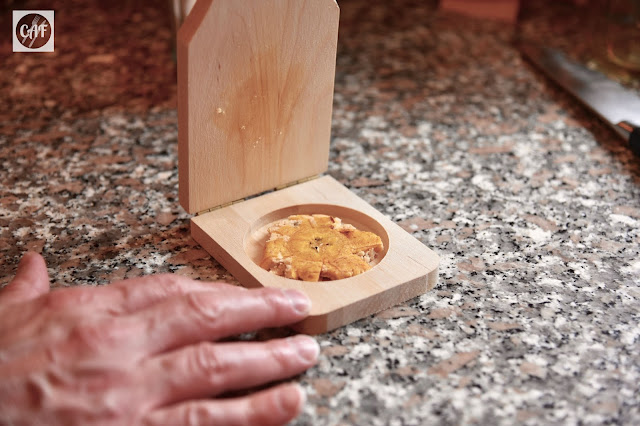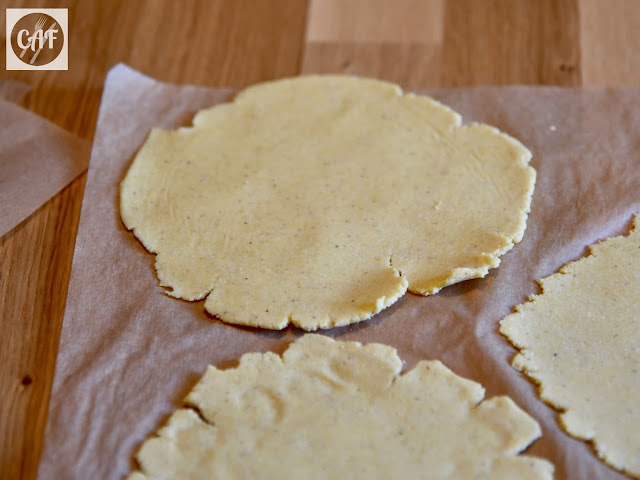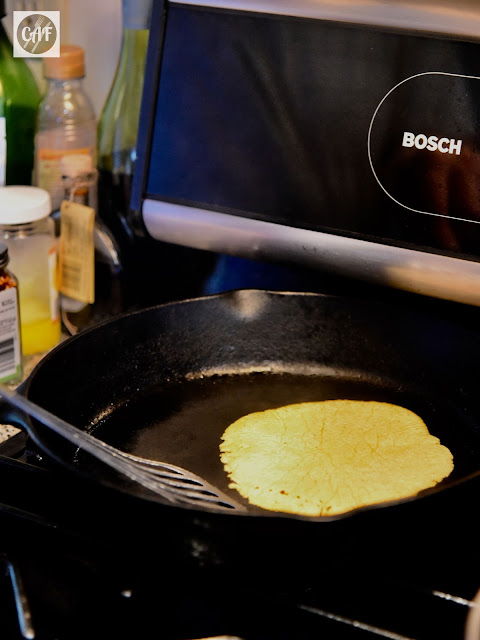But we weren't hungry at four in the morning, so instead I uploaded our dinner photos from last night and dorkily reminisced over how fantastic it was.
Our menu? It was an eclectic compilation of Latin American foods:
- Puerto Rican tostones with mayo-ketchup
- Mexican barbacoa served on homemade corn tortillas
- Caribbean cucumber and mango chow
This dinner, believe it or not, was actually super simple and quick. The barbacoa is made in the crockpot; the tostones fry up (twice!) in about 5 minutes total once the oil is hot; and the chow takes about 10 minutes to assemble before it chills in the fridge. The longest part is the tortilla preparation, but that—that I will get to. Save the best for last...
First, the chow. I may have already mentioned this salad-of-sorts in a previous post. I've certainly made it several times already since it was published by Bon Appétit in their April 2017 issue. The recipe is from Miss Ollie of Miss Ollie's in Oakland, CA. It has an easy-to-find list of ingredients and can be made in about ten minutes. The best part is that it can be made a few hours ahead and chilled in the fridge while you are making the rest of your dinner. I love it for its sweet but peppery mango, the heat of chiles, the coolness of cucumber, and the tang of lime. The cilantro allows you to serve it with a variety of ethnic foods that love cilantro: Thai, Mexican, Caribbean. It's simply fantastic.
Next, the tostones. Tostones are thick slices of green plantain that have been fried, flattened, fried again, then sprinkled with adobo seasoning and served with garlicky mayo-ketchup. We learned how to make these babies when we recently had our friend Chaz (JetBlue's BEST flight attendant!) over to cook a Puerto Rican dinner (yes, I will blog on that soon!).
Not only are these just flat-out fun to make (no pun intended, really!), they are absolutely delicious and healthy, with about 2 grams of dietary fiber for half a green plantain and a low glycemic index. And as for the frying, if you still think fried food is horribly unhealthy, that's because—sorry—you are doing it wrong. Food properly fried barely absorbs any fat; the water in the food immediately starts to steam when the food is dropped into the screaming hot oil, pushing water out of the food so that the fat can't soak in. Don't believe me? Read the transcript of a Good Eats episode by Alton Brown, one of my favorite food scientists, who explains it in a more entertaining way. You can also do a bit of research on this. You'll find that science is right. Thank you, science.
Now for the barbacoa. I have no idea who Queen To Y'All is, but I want to thank her for posting this recipe on Recipezaar.com years ago and making me and my friends extremely happy. It was a required party staple during my years in Chicago. Now you can find the recipe under "Chipotle Roast for Tacos and Sandwiches" on Food.com. It's awesomely simple. Dump all the ingredients into the Crockpot in the morning, set her on low, and walk away until it's time to prep the rest of dinner. It will sit and simmer happily, silently taunting you, wafting smells of cumin and spice all day long. When it's time to eat, stir it all up with a slotted spoon and put it on the table. That's it.
We are now left with the best for last...
I've never in my life eaten a fresh corn tortilla. Even the Mexican restaurants that I've visited use prepackaged. You can tell: they are rubbery, pretty darn tasteless, and absolutely perfectly round. It's actually kind-of too bad I made these (in a good way) because after eating them, I don't know that I'm ever going to be able to eat another commercially made tortilla again.
Corn tortillas may somehow look complicated (like anything does when you've never made one) but in reality are super simple to make. They are made with a fine corn flour called "masa harina" (I used Bob's Red Mill—totally gluten-free, by the way, and you can find it in most grocery stores), salt and water. I used my stand mixer to blend the ingredients into a smooth paste, then Chef Reiton formed them into little balls.
We experimented with different ways to roll them out. Chef Reiton started by rolling them on a sheet of parchment
but we decided that they tore less and came out rounder if they were flattened with my palm between two sheets of parchment and then rolled gently.
We also learned that the little balls need to be kept under a damp towel while the tortillas are being rolled out. They started to dry out rather quickly, making them break and tear when they were rolled. Because of this learning curve, I ended up actually dipping the last several balls of dough into a bowl of water twice then rekneading them to soften them back up again.
With our cast iron skillet smoking hot, we cooked up the tortillas, one minute a side, finishing with a final thirty seconds after the second flip. Later we realized we should have had two skillets going at a time. Duh. It would have gone faster.
The recipe for these tortillas came from a wonderful cookbook by Marilyn and Luis Peinado called Bienvenidos to Our Kitchen: Authentic Mexican Cooking. The book is loaded with every single authentic Mexican dish you've ever eaten plus some.
You are in luck, too! New copies are still available on Amazon.com as well as used copies on BarnesandNoble.com and eBay.
As Chef Reiton and I sat sipping our rioja at the end of the meal, we couldn't stop oohing and ahhhing over our empty plates. I do not mean this as a boast, but how could we have made probably the best Latin meal I have ever had in our North American kitchen?
The answers are simple:
- We are willing to experiment making new foods.
- We are willing to mess up and learn from our mistakes for the next time we try it.
- We are into saving money while eating food that is usually better than a restaurant's.
Do you want to know how much our dinner for two last night cost us? Actually it's probably closer to three dinners for two, thanks to the leftovers. Let's assume that going out for an average Mexican dinner costs $60 for two people. Sound reasonable? Maybe even a little cheap if you throw a few margaritas into the bill?
Well, here's what I spent at Market Basket on the ingredients that make three full meals for two (and I'm even going to assume you don't have staples like cumin, garlic, chile powder or oil). I'll even throw in the bottle of wine we had with dinner:
- 2 lb. chuck roast from Walden Local Meats, my pasture-raised meat share: $20.00
- can of green chiles: $.99
- can of chipotle peppers: $2.69
- onion: $.43
- can of salsa verde (even though mine was free because I used my own): $1.29
- beef consumme (used my own, again, so technically free): $1.89
- garlic head: $.40
- cumin: $1.59
- chile powder: $1.29
- adobo seasoning: $2.79
- green plantain: $.33
- corn oil: $3.09
- masa harina: $2.99
- hothouse cucumber: $.99
- mango: $.99
- cilantro: $.99
- shallot: $.25
- bottle of wine: $18.00
TOTAL: $60.99
So, for a more expensive, pasture-raised roast, a good bottle of wine and ALL the ingredients for the meal, I spent the same as the cost of a Mexican dinner out—and I'll actually get THREE dinners for two out of last night, not just the one. AND my homemade dinner was SO MUCH BETTER than the food you get at a restaurant.
And it's not ME who is awesome! It's the FOOD!!!
And it's not ME who is awesome! It's the FOOD!!!
Sigh.
I'll calm down. But, folks...this is why I cook. And it's why you should, too. It's cheaper. It's healthier. It's waaaaaaay deliciouser. (I know.)
So. Think about what foods you love. Find the recipes. Buy the ingredients. Make the meal. Even if you "screw up," it's going to be good.
Promise.
Promise.













No comments :
Post a Comment
Let's all learn together! Tell us your thoughts or about your own experience: